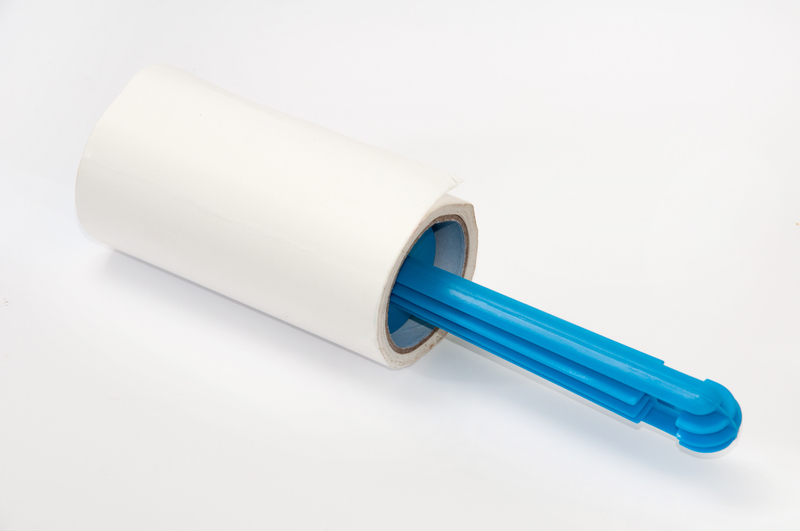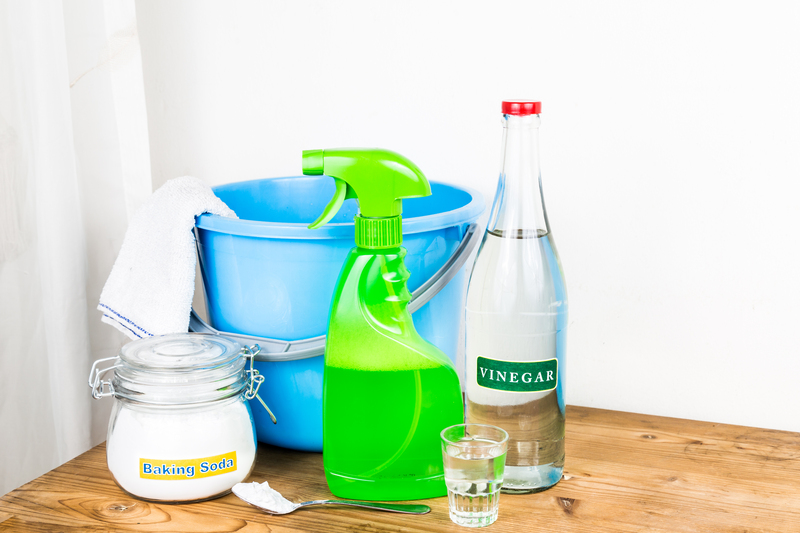Creating Safe Havens: Ensuring Quality Air Indoors
Posted on 15/06/2025
Creating Safe Havens: Ensuring Quality Air Indoors
In today's rapidly urbanizing world, our homes, schools, and offices serve as sanctuaries from external pollutants and stressors. Yet, the very air we breathe indoors can harbor invisible threats to our well-being. Ensuring quality air indoors is not just a matter of comfort--it's a cornerstone of health and productivity. This comprehensive guide explores practical strategies, innovative technologies, and actionable tips for creating genuinely safe havens through enhanced indoor air quality.

Why Indoor Air Quality Matters
On average, people spend up to 90% of their time indoors. Poor indoor air quality (IAQ) can lead to a variety of health issues, from headaches and allergies to more severe respiratory conditions. Moreover, indoor environments often trap pollutants generated from everyday activities, furniture, and even building materials. Recognizing the impact of indoor air quality is the first step toward creating safe havens inside our homes and workplaces.
Key Dangers of Poor Indoor Air
- Respiratory Problems: Allergens, dust, and mold spores contribute to asthma, coughing, and wheezing.
- Headaches & Fatigue: High levels of carbon dioxide and volatile organic compounds (VOCs) can impair concentration and lead to tiredness.
- Long-Term Illnesses: Chronic exposure to toxins like formaldehyde and radon increases the risk of developing certain cancers and other diseases.
- Mental Well-being: Poor air quality has been linked to decreased cognitive function and mood disorders.
Common Sources of Indoor Air Pollutants
To effectively ensure quality air indoors, it's crucial to identify where contaminants originate. Some sources are easily overlooked, so awareness is key.
Frequent Pollutant Sources
- Household Cleaners: Many cleaning products contain chemical agents like ammonia and bleach that release harmful fumes.
- Building Materials: Paints, adhesives, and treated woods often emit VOCs long after initial use.
- Cooking: Gas stoves release nitrogen dioxide and particulates, especially with poor ventilation.
- Pets: Dander, fur, and accidents can elevate allergen and ammonia levels indoors.
- Outdoor Air Intrusion: Pollen, vehicle exhaust, and industrial pollution can infiltrate indoor environments, particularly in urban settings.
Ventilation: The Foundation of Quality Indoor Air
Proper ventilation is essential for maintaining healthy indoor air. It not only dilutes indoor pollutants but also brings fresh oxygen-rich air inside your safe haven.
Types of Ventilation for Ensuring Quality Air Indoors
- Natural Ventilation: Leveraging windows, doors, and architectural features to foster air exchange.
- Mechanical Ventilation: Employing systems such as exhaust fans and HVACs (Heating, Ventilation, and Air Conditioning) to circulate and refresh indoor air.
- Energy Recovery Ventilators (ERVs) & Heat Recovery Ventilators (HRVs): These advanced units transfer heat or coolness between outgoing and incoming air, efficiently maintaining indoor comfort while ensuring adequate air exchange.
Optimizing Home Ventilation
- Regularly open windows and doors when outdoor air quality is good.
- Use exhaust fans in kitchens and bathrooms to remove moisture and odors at the source.
- Maintain HVAC systems to prevent mold and bacteria buildup in filters and ducts.
- Consider installing air exchange systems in sealed or energy-efficient buildings to ensure effective ventilation without compromising insulation.
Filtering the Air: Innovations for Cleaner Environments
Air filtration is indispensable for enhancing indoor air quality, especially in areas with high outdoor pollution or in homes with pets and allergy-prone residents.
Types of Indoor Air Filters
- HEPA Filters (High-Efficiency Particulate Air): Capture up to 99.97% of particles as small as 0.3 microns, including pollen, pet dander, and dust mites.
- Activated Carbon Filters: Absorb odors, smoke, and VOCs, making them ideal for kitchens and households that use chemical-heavy products.
- UV-C Purifiers: Use ultraviolet light to deactivate bacteria, viruses, and mold spores, complementing traditional filtration methods.
- Electrostatic Filters: Employ electrically charged fibers to attract and trap particulate matter.
Best Practices for Using Air Purifiers
- Select appropriately sized purifiers based on room dimensions and air exchange rates.
- Replace filters as recommended to ensure optimal performance.
- Position units strategically--near pollutant sources or in high-traffic areas for maximum efficiency.
- Consider portable units for flexibility in multi-use spaces.
Humidity Control: The Secret Ingredient for Healthy Spaces
Humidity has a significant effect on creating safe indoor environments. Both excessive and insufficient moisture levels can be harmful, influencing the proliferation of mold, dust mites, and respiratory comfort.
Optimizing Indoor Humidity
- Ideal Range: Keep indoor humidity between 30-50% for optimal comfort and pathogen control.
- Use Dehumidifiers in damp areas like basements to prevent mold and mildew.
- Employ Humidifiers in dry climates, especially during winter, to ease breathing and reduce static electricity.
- Monitor with Hygrometers: These inexpensive devices allow you to monitor real-time humidity levels and make adjustments as needed.
Everyday Habits to Maintain Quality Air Indoors
Establishing clean air habits can have an immediate and cumulative effect on your indoor air safety. Small changes in daily behavior significantly reduce pollutant accumulation.
Simple but Powerful Indoor Air Quality Tips
- Avoid smoking indoors, as tobacco smoke is a leading cause of indoor pollution.
- Store chemicals and paint in sealed containers and ideally in outdoor sheds or garages.
- Use natural cleaning products or make your own from vinegar, baking soda, and essential oils.
- Launder bedding and curtains regularly to minimize dust and allergen buildup.
- Leave shoes at the door to reduce the introduction of outdoor toxins and allergens.
- Minimize clutter to restrict dust accumulation and facilitate easier cleaning.
The Role of Indoor Plants in Air Purification
Plants do more than beautify our homes--they can also contribute to cleaner air. While scientists continue to debate the scale of their benefits, certain species are recognized for filtering out common VOCs and boosting humidity naturally.
Best Indoor Plants for Air Quality
- Spider Plant: Removes formaldehyde and xylene.
- Snake Plant (Sansevieria): Effective against benzene and trichloroethylene; easy to maintain.
- Peace Lily: Helps eliminate ammonia and formaldehyde, but keep out of reach of pets due to toxicity.
- Boston Fern: Excels at removing air pollutants and adding moisture.
Remember, while plants can supplement other purification methods, they are best used as part of a holistic indoor air quality strategy.
Smart Technology for Improved Indoor Air Quality
Recent innovations have made it easier than ever to monitor and manage indoor air safety using connected devices and smart systems.
Integrating Technology for Safe Indoor Environments
- Air Quality Monitors: Devices that track particulates, VOCs, CO2, and humidity in real-time.
- Smart Thermostats: Some models can activate ventilation or filtration systems automatically based on IAQ data.
- Automated Purifiers and Humidifiers: Can be programmed to adjust their operation for optimal air health.
- Remote Alerts and Analytics: View air quality reports and receive maintenance reminders directly to your smartphone.
Leverage technology to adopt a proactive rather than reactive approach in your efforts to ensure quality indoor air.
Special Considerations: Creating Safe Havens for Vulnerable Populations
Certain groups--such as children, the elderly, and individuals with respiratory conditions--are especially susceptible to the effects of poor indoor air. Exceeding minimum standards is vital in settings like schools, healthcare facilities, and homes for those with chronic illnesses.
Recommendations for Vulnerable Groups
- Use medical-grade HEPA filters for those with asthma or severe allergies.
- Eliminate fragrances and aerosol sprays from environments housing sensitive individuals.
- Ensure frequent handwashing and surface cleaning to prevent the spread of viruses and bacteria.
- Choose hypoallergenic bedding and furnishings to reduce dust mite exposure.
- Consult with healthcare providers for tailored solutions in extreme cases.
Evaluating and Certifying Indoor Air Quality
For those seeking assurance, professional air quality assessments are available. Certified specialists can pinpoint specific issues and recommend targeted solutions.
What a Professional Indoor Air Audit Involves
- Air Sampling: Detection of particulates, mold spores, radon, CO, and chemical contaminants.
- Ventilation Evaluation: Analysis of air intake and exhaust functionality to identify stagnant zones.
- Moisture Checks: Locating excess dampness that could foster mold growth.
- Energy Efficiency Recommendations: Balancing clean air with eco-friendly, cost-effective solutions.
Certification programs--such as LEED (Leadership in Energy and Environmental Design) or WELL Building Standard--can bolster trust for businesses, schools, and landlords by ensuring adherence to advanced indoor air quality guidelines.

Future Trends: The Evolving Science of Indoor Air Safety
As our understanding grows and technology advances, maintaining quality air indoors will become more holistic and data-driven.
Emerging Developments in Indoor Air Quality
- IoT-Connected Buildings: Entire homes and offices will soon benefit from automated IAQ management systems.
- Green Building Materials: Sustainable construction using low-emission, non-toxic materials is gaining momentum.
- Bio-based Air Purifiers: Algae and moss walls may offer natural alternatives to mechanical filtration in the near future.
- Personalized Air Management: Wearable sensors and portable purifiers allow individuals to create personal safe havens, even in shared spaces.
Conclusion: Building Your Safe Haven, One Breath at a Time
Air is life--indoors as much as outdoors. By taking a multi-faceted approach to indoor air safety, you can transform your home, workplace, or classroom into a true sanctuary, fostering health, comfort, and peace of mind. Start with simple changes, like ventilating daily and using air purifiers, before advancing to smart technologies and professional audits for comprehensive protection.
Ultimately, ensuring quality air indoors is an investment in your well-being and that of everyone sharing your space. Prioritize air purity, and every breath inside your haven can be a breath of fresh air.



